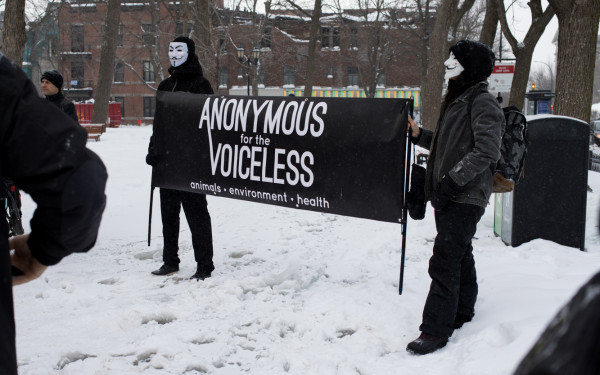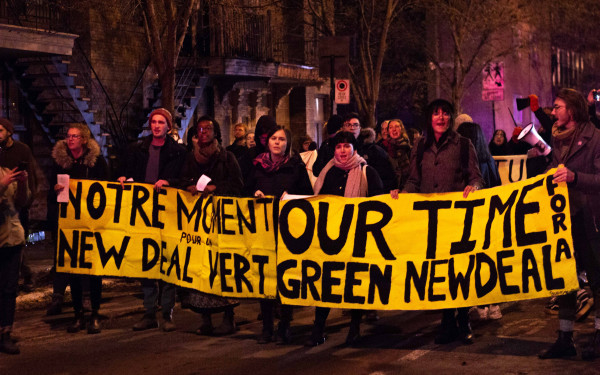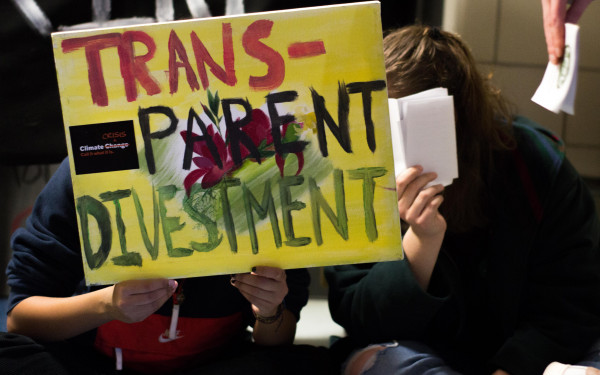Activists Cycle for an Arctic Sanctuary
Fifty cyclists met at Parc Laurier last Saturday for a Greenpeace demonstration for the protection of the Arctic.
The Ice Ride protest took place a few days after 35,000 walruses were photographed stranded in Alaska, after being forced ashore with no ice to climb—another consequence of rising temperatures in the North.
“The science behind climate change and global warming is not an exact science, but all the forecasts so far are catastrophic,” said Diego Criemer, an Arctic campaigner for Greenpeace.
While melting ice is changing life in the Arctic, environmental activists believe governments are profiting from less ice to explore previously unreachable waters.
Greenpeace’s international campaign for the protection of the Arctic is asking for the creation of Arctic sanctuaries off-limits to the oil industry and any activities that disrupt the natural environment there any more.
“They are going to extract and eventually burn the same oil that caused global warming in the same place,” he said. “It’s like a vicious circle.”
Raising awareness about the Arctic is difficult, says Criemer, because it is so isolated and difficult to survive there.
“It’s a place where probably no one is going to go,” he said. “But people do care about the Arctic; they think of things like walruses, polar bears and whales.”
The Ice Ride was intended to be accessible to as many people as possible, including families, while protesting in a sustainable and visible way.
“As people said in New York [during Climate Week], if we want to change everything, we need everyone,” said Charles Latimer, Greenpeace’s oceans campaigner.
“They are going to extract and eventually burn the same oil that caused global warming in the same place, it’s like a vicious circle.” —Diego Criemer, Arctic campaigner for Greenpeace
Cyclists finished a 12-km stretch through the downtown core at Place des Arts, stopping outside of the consulate offices of the United States, Norway, Denmark and Sweden along the way. Finland is the only member of the Arctic Council that has agreed to the need for an Arctic sanctuary.
Greenpeace is now supporting the small Inuit community of Clyde River in eastern Nunavut. Canada’s National Energy Board recently approved five years of seismic testing in Baffin Bay and Davis Strait, which touch the community of less than a thousand people. This will put marine animals like beluga whales, walruses, narwhals and seals at risk, says Latimer.
Seismic testing, a preliminary step for offshore drilling in the Arctic, is a process that creates loud blasts of noise, altering the migratory patterns of whales.
“What’s going to happen to wildlife?” said Criemer. “And what’s going to happen to coastal populations that depend on [these animals], who hunt them for food?”
Clyde River is challenging the National Energy Board’s decision in court with hopes of putting a stop to the testing.
The Ice Ride was held in eight other cities across Canada, including Vancouver, Toronto, Medicine Hat, Ottawa, Quebec, Sherbrooke, St. Lambert and Trois-Rivières, and in the cities of 30 countries around the world.
Greenpeace’s Arctic campaign has gained global support and made headlines last year after 30 campaigners—including two Canadians—on board a Greenpeace ship were detained in Russia. The activists were arrested without charges after two of them boarded an Gazprom-owned oil rig, leading to an international campaign calling for their release.
Before the New York Climate Summit last month, U.N. Secretary-General Ban Ki-moon accepted Greenpeace’s Save the Arctic petition calling for long- term protection of the Arctic region with over 6 million signatures.
Canada, meanwhile, says it has invested nearly $235 million to help Canadians living in the Arctic adapt to changing climates.
Environment Canada says it is making efforts in the North on keeping it clean and conserving wildlife as part of its Northern Strategy.
Canada is also the current chair of the Arctic Council and says it is placing its main focus on developing resources, protecting the environment and waters, and limiting carbon pollution in Northern communities.
While the program says resources will be developed in a sustainable way, oil and gas are in no way considered sustainable by environmental scientists.


1web_600_375_90_s_c1.jpg)


